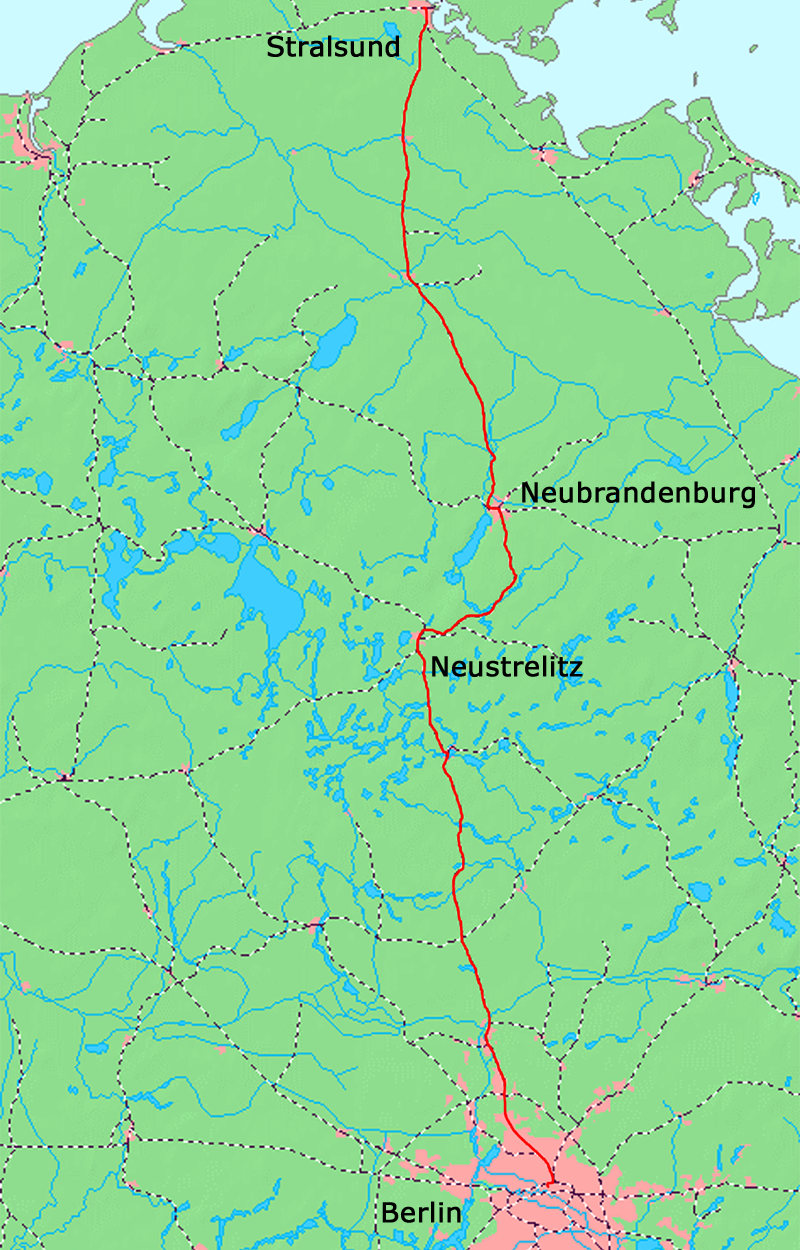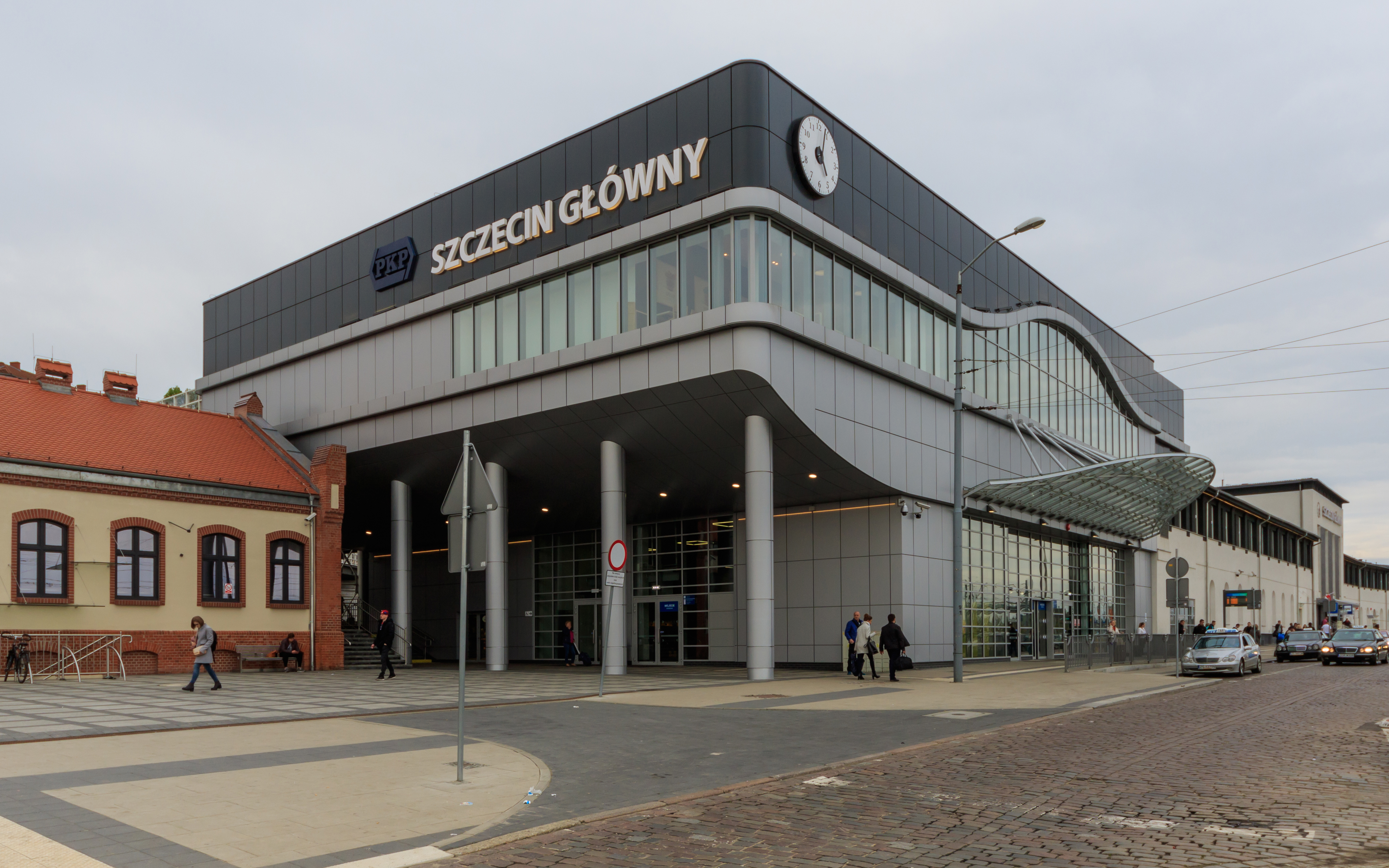|
Outer Freight Ring
The Berlin Outer Freight Ring (German: ''Güteraußenring'', GAR) was a planned ring railway around the city of Berlin, Germany. The first sections of a line to the west of the city were built in the early 20th century as part of the Brandenburg Bypass Railway (''Umgehungsbahn''). Even then, there were plans for a bypass south of Berlin. The first bits were built in the early 1920 and more sections followed in the 1930s. The line could not be completed due to the impact of the Second World War. The completed section consisted of a mainly single-track link running from Teltow to Berlin-Karow to the south and east of Berlin. Part of the route line later became part of the Berlin outer ring (''Berliner Außenring'', BAR). Route The Outer Freight Ring began in Teltow freight yard on the Anhalt Railway. The starting point was chosen because the Großbeeren marshalling yard was to be built south of Teltow. From there the Michendorf–Großbeeren railway had connected the Anhalt Railw ... [...More Info...] [...Related Items...] OR: [Wikipedia] [Google] [Baidu] |
Berlin
Berlin ( , ) is the capital and List of cities in Germany by population, largest city of Germany by both area and population. Its 3.7 million inhabitants make it the European Union's List of cities in the European Union by population within city limits, most populous city, according to population within city limits. One of Germany's States of Germany, sixteen constituent states, Berlin is surrounded by the Brandenburg, State of Brandenburg and contiguous with Potsdam, Brandenburg's capital. Berlin's urban area, which has a population of around 4.5 million, is the second most populous urban area in Germany after the Ruhr. The Berlin/Brandenburg Metropolitan Region, Berlin-Brandenburg capital region has around 6.2 million inhabitants and is Metropolitan regions in Germany, Germany's third-largest metropolitan region after the Rhine-Ruhr and Frankfurt Rhine-Main, Rhine-Main regions. Berlin straddles the banks of the Spree (river), Spree, which flows into the Havel (a tributary of ... [...More Info...] [...Related Items...] OR: [Wikipedia] [Google] [Baidu] |
Prussian Eastern Railway
The Prussian Eastern Railway (german: Preußische Ostbahn) was a railway in the Kingdom of Prussia and later Germany until 1918. Its main route, approximately long, connected the capital, Berlin, with the cities of Danzig (now Gdańsk, Poland) and Königsberg (now Kaliningrad, Russia). At Eydtkuhnen (now Chernyshevskoye, Russia) it reached the German Empire's border with the Russian Empire. The first part of the line opened in 1851, reaching Eydtkuhnen in 1860. By March 1880 the total route length reached , with a main parallel route in the south via Bromberg (now Bydgoszcz, Poland) and Thorn (now Toruń, Poland) to Insterburg (now Chernyakhovsk, Russia). The lines were the first part of the later Prussian State Railways (german: Preußische Staatseisenbahnen). History From about 1840, the Prussian military urgently sought a railway connection to the Russian border for strategic reasons. The railway was also seen from the early years as a means of developing the underd ... [...More Info...] [...Related Items...] OR: [Wikipedia] [Google] [Baidu] |
Oranienburg Station
Oranienburg (german: Bahnhof Oranienburg) is a railway station located in Oranienburg, Germany. The station was opened in 1877 is located on the Berlin Northern Railway and the now closed Nauen–Oranienburg railway and Oranienburg–Velten railway. The train services are operated by Deutsche Bahn and Niederbarnimer Eisenbahn Niederbarnimer Eisenbahn GmbH is a private railway company operating regional train service in Berlin and Brandenburg, eastern Germany. It is owned by Industriebahn-Gesellschaft Berlin (66.92%) and four districts in the region (33.08%). The c .... History After the construction of the Wall on August 13, 1961, the S-Bahn line was interrupted to Berlin on the border with West Berlin between Hohen Neuendorf and Berlin-Frohnau, thus travelling alone. Later on, the track of the Berlin outer ring between Hohen Neuendorf and the Karower Kreuz was temporarily provided with a busbar and built an additional connecting curve between outer ring and northern railw ... [...More Info...] [...Related Items...] OR: [Wikipedia] [Google] [Baidu] |
Sachsenhausen (Oranienburg)
Sachsenhausen () is a district on the Havel in the north of the town Oranienburg, 35 kilometres north of Berlin in Germany. it had a population of 2,735. The district's name means 'Houses of the Saxons'. The area became notorious for the nearby site of the Nazi concentration camp - also called Sachsenhausen - which operated from 1936 to 1945. For five years after World War II World War II or the Second World War, often abbreviated as WWII or WW2, was a world war that lasted from 1939 to 1945. It involved the World War II by country, vast majority of the world's countries—including all of the great power ... the Soviets used the facility as Special Camp No. 7 (later Soviet Special Camp No. 1). Villages in Brandenburg Localities in Oberhavel {{Brandenburg-geo-stub ... [...More Info...] [...Related Items...] OR: [Wikipedia] [Google] [Baidu] |
Berlin Northern Railway
The Berlin Northern Railway (german: Berliner Nordbahn) is a 223-kilometre-long main line route, that runs from Berlin via Neustrelitz and Neubrandenburg to Stralsund on the Baltic Sea coast. Nowadays, long-distance and regional traffic on the Nordbahn is routed at Hohen Neuendorf onto the Berlin Outer Ring to the Karower Kreuz and on to Berlin Main Station or Berlin-Lichtenberg. History Construction of the line was preceded by decades of planning from 1843 until 1870 when the newly founded ''Berlin Northern Railway Company'' (German: ''Berliner Nord-Eisenbahn-Gesellschaft'') gained the concessions from the states of Prussia and Mecklenburg-Strelitz. For financial reasons, the company was dissolved on 15 December 1875. The Prussian government acquired the unfinished railway and handed over further construction of it to the Lower Silesian-Markish Railway (''Niederschlesisch-Märkische Eisenbahn''). The opening took place in three stages: *10 July 1877: Berlin–Oranienburg–Neu ... [...More Info...] [...Related Items...] OR: [Wikipedia] [Google] [Baidu] |
Mühlenbecker Land
Mühlenbecker Land is a municipality in the Oberhavel district, in Brandenburg, Germany. History The municipality shared its borders partly with the former West Berlin, and so during the period 1961-1990 it was separated from it by the Berlin Wall. File:Muehlenbecker_See.jpg, Lake "Mühlenbecker See" File:Muehlenbeck_Tegeler_Fliess.jpg, Tegeler Fließ Demography File:Bevölkerungsentwicklung Mühlenbecker Land.pdf, Development of population since 1875 within the current Boundaries (Blue Line: Population; Dotted Line: Comparison to Population development in Brandenburg state; Grey Background: Time of Nazi Germany; Red Background: Time of communist East Germany) File:Bevölkerungsprognosen Mühlenbecker Land.pdf, Recent Population Development and Projections (Population Development before Census 2011 (blue line); Recent Population Development according to the Census in Germany A national census in Germany (german: Volkszählung) was held every five years from 1875 to 1910. ... [...More Info...] [...Related Items...] OR: [Wikipedia] [Google] [Baidu] |
Basdorf
Basdorf is a village to the north of Berlin, in the German federal state of Brandenburg. Until 2003, when it merged into Wandlitz Wandlitz is a municipality in the district of Barnim, in Brandenburg, Germany. It is situated 25 km north of Berlin, and 15 km east of Oranienburg. The municipality was established in 2004 by merger of the nine villages ''Basdorf' ..., it was an autonomous municipality. Villages in Brandenburg Former municipalities in Brandenburg {{Brandenburg-geo-stub ... [...More Info...] [...Related Items...] OR: [Wikipedia] [Google] [Baidu] |
Wandlitz
Wandlitz is a municipality in the district of Barnim, in Brandenburg, Germany. It is situated 25 km north of Berlin, and 15 km east of Oranienburg. The municipality was established in 2004 by merger of the nine villages ''Basdorf'', '' Klosterfelde'', ''Lanke'', '' Prenden'', '' Schönerlinde'', ', ', ''Wandlitz'' and '' Zerpenschleuse''. The communal government of the Great municipality has its seat in Wandlitz directly. It consists of deputies from the several parts of the commune and in accordance with the election results of the existing parties here. Demography The post-war influx of refugees from eastern regions led to a rise in the population. The population growth stagnated during the communist era. After the fall of the Berlin Wall, the population began a rising tendency again. File:Bevölkerungsentwicklung Wandlitz.pdf, Development of Population since 1875 within the current Boundaries (Blue Line: Population; Dotted Line: Comparison to Population Developm ... [...More Info...] [...Related Items...] OR: [Wikipedia] [Google] [Baidu] |
Berlin-Karow Station
Berlin-Karow station is a railway station on the Berlin–Szczecin railway in the Pankow district of Berlin. It is served by the S-Bahn line and the line NE27 (also known as the Heidekrautbahn), operated by the Niederbarnimer Eisenbahn. 2009 Train Collision On 17 April 2009, twenty-four people were injured when a regional train from Stralsund, Mecklenburg-Vorpommern, crashed into a freight train carrying propane, north of Berlin Berlin ( , ) is the capital and List of cities in Germany by population, largest city of Germany by both area and population. Its 3.7 million inhabitants make it the European Union's List of cities in the European Union by population within ci .... The passengers and railway staff were hurt in the accident which took place 250m outside of Berlin-Karow railway station. Nine of the injured, five of them in critical condition, were taken to nearby hospitals. References Karow Karow Karow Railway stations in Germany opened in 1882 {{B ... [...More Info...] [...Related Items...] OR: [Wikipedia] [Google] [Baidu] |
Berlin–Szczecin Railway
The Berlin–Szczecin railway, also known in German language, German as the Stettiner Bahn (Stettin Railway) is a mainline railway built by the ''Berlin-Stettin Railway Company'' between the German capital of Berlin and the now Poland, Polish city of Szczecin, then part of Prussia and known as Stettin. It is one of List of the first German railways to 1870, the oldest lines in Germany, built in 1842 and 1843 and was the company's trunk line. The line was duplicated between Berlin and Angermünde in 1863 and between Angermünde and Szczecin in 1873. The line is still used by regional trains on the Berlin–Angermünde route (some to or from Stralsund) and on the Angermünde–Szczecin route as well as the long-distance trains on the entire Berlin–Szczecin line. Between central Berlin and the suburban station of Bernau bei Berlin station, Bernau the line also has its own suburban tracks used by the Berlin S-Bahn. The line is also a major route for the transport of freight between G ... [...More Info...] [...Related Items...] OR: [Wikipedia] [Google] [Baidu] |



